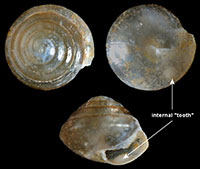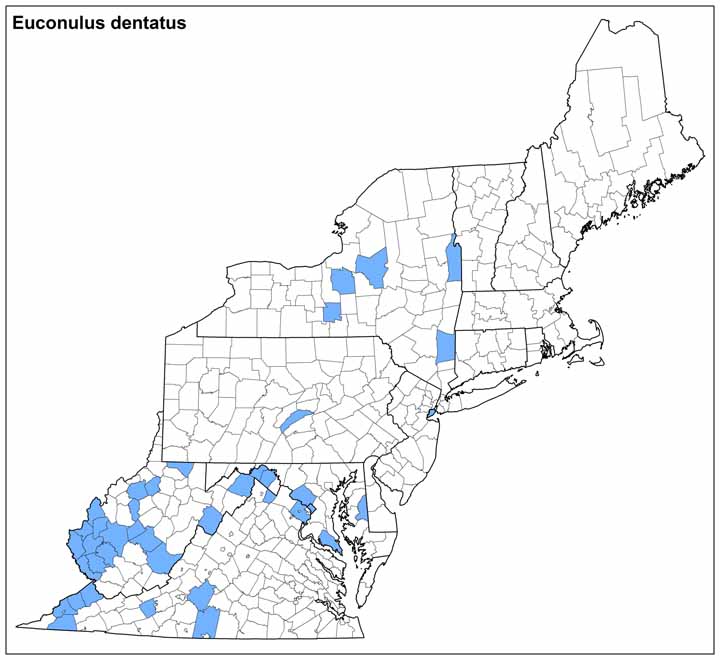Land Snails

.jpg)
Photo(s): Euconulus dentatus shell from below, showing the base of interior teeth visible through the bottom of the transparent shell, © Larry Watrous. Other views of E. dentatus © David Kirsch.
Click photo(s) to enlarge.
Euconulus dentatus (Sterki, 1893)
Family: Euconulidae
Common name: Toothed Hive
Identification
Width: 2-3 mm
Height: 2-3 mm
Whorls: 6+
Like others of its genus, the shell of Euconulus dentatus is a small beehive shape, and thin, with tightly coiled whorls. The final whorl of E. dentatus contains 1-3 radially-aligned lamellae that can be viewed through the base of the shell. When multiple lamellae are present, they are spaced at wide intervals, about every 1/3 of a whorl (Pilsbry, 1946).
Recent genetics work suggests that shell characters may no longer be useful in distinguishing between species in the group of nominal species E. chersinus, E. dentatus, and E. trochulus (J.C. Nekola, pers. comm.).
Ecology
Euconulus dentatus lives primarily in dry leaf litter, and is occasionally found around logs. It is one of the more difficult snails to collect because of the timing of its life cycle; individuals reach maturity in winter and die in spring (Hubricht 1985). In Tennessee, it is associated with steep slopes and limestone substrata at elevations of 940 to 1,120 feet (Coney et al, 1982).
Taxonomy
Taxonomy of the genus Euconulus is in a state of flux. Recent genetics research shows that Euconulus chersinus is part of a group of nominal species that also includes E. dentatus and E. trochulus (J.C. Nekola, pers. comm.). Previous shell morphology guidelines may no longer be useful to distinguish between the members of this group.
This species has also been known as Euconulus chersinus dentatus.
Distribution
Euconulus dentatus is widespread throughout the southeastern United States. It is reported from the Appalachian Mountains of Pennsylvania in the north to Louisiana in the south (Hubricht, 1985). In Virginia it is found in scattered counties but is absent in the southeast.
Because beehive snails are difficult to identify, and there is now uncertainty about the taxonomy of this nominal species, the usefulness of historic reports is unclear.
Conservation
NatureServe Global Rank: G5
Meegan Winslow 11/2012
Ken Hotopp 2/2013
Update KH 3/2018



